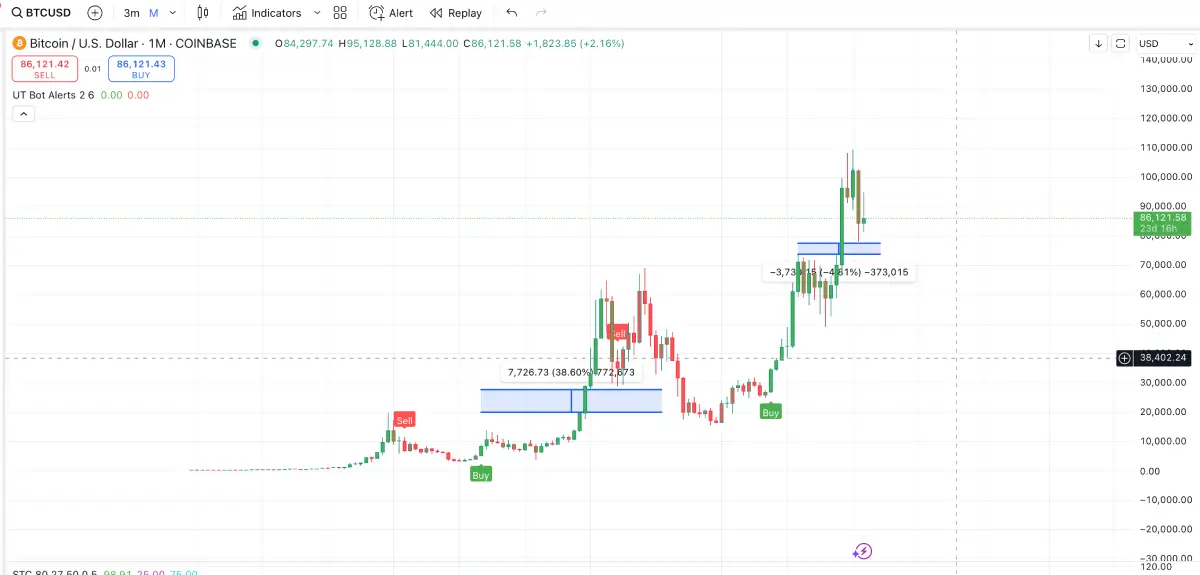In the realm of financial markets, U.S. employment data serves as a critical pulse, with the ADP National Employment Report and the Nonfarm Payrolls (NFP) report standing out as key players. These indicators illuminate the labor market from the perspectives of the private sector and the broader economy, acting not just as barometers of economic health but as catalysts that ignite movements in U.S. stocks, cryptocurrencies, and forex markets. Stripping away specific figures, this article dives deep into their essence and explores how they shape financial markets through economic signals and policy expectations.
Understanding ADP and Nonfarm Payrolls
- ADP Employment Report: A Snapshot of Private Sector Jobs
The ADP National Employment Report, published by Automatic Data Processing Inc. (ADP) in collaboration with Moody’s Analytics, tracks employment changes in the U.S. non-agricultural private sector. Drawing from payroll data of millions of workers, it excludes government employees and spans businesses of all sizes. Released two days before NFP (typically on Wednesdays), it’s widely regarded as a preview of the broader employment data landscape. - Nonfarm Payrolls: The Full Economic Picture
The Nonfarm Payrolls report, issued by the U.S. Bureau of Labor Statistics (BLS), provides a comprehensive view of employment shifts across both private and public non-agricultural sectors. Beyond job gains or losses, it includes vital metrics like unemployment rates, average hourly earnings, and labor force participation. Published on the first Friday of each month, it’s the authoritative benchmark that directly influences Federal Reserve policy. - Key Differences and Synergy
While ADP focuses solely on private-sector employment data, offering real-time insights with a narrower scope, NFP encompasses both private and public sectors, delivering broader but potentially less immediate data. Their trends align roughly 60%-70% of the time. ADP sets the stage, while NFP confirms the narrative, together driving market dynamics.
Why Are They So Pivotal?
The power of ADP and NFP lies in their dual role as economic and policy indicators:
- Economic Barometer
Employment data reflects business activity and consumer spending power. Job growth signals economic expansion, while declines hint at slowdowns. ADP offers an early private-sector glimpse, and NFP paints the full picture. - Federal Reserve Compass
The Fed bases its dual mandate—maximizing employment and stabilizing prices—on labor market trends. Strong employment data may push the Fed toward a hawkish stance (tightening policy), while weak figures could spur dovish measures (easing policy). Markets use ADP and NFP to anticipate these shifts. - Global Ripple Effect
As the U.S. drives a quarter of global GDP, employment data impacts the dollar, reverberating across international markets and shaping trading strategies worldwide.

How They Shape Financial Markets
1. U.S. Stocks: A Tug-of-War Between Confidence and Expectations
- Strong Data
Robust employment data—like significant job gains—boosts investor confidence by signaling improved corporate earnings potential. U.S. stocks, such as the S&P 500 and Nasdaq, may rise 1%-1.5%, driven by tech, consumer, and financial sectors. However, rapid wage growth could stoke inflation fears, raising interest rate expectations and pressuring stock valuations. - Weak Data
Subpar job growth triggers mixed outcomes: anticipated rate cuts might lift the S&P 500 by 0.5%-1%, especially tech stocks, due to cheaper borrowing costs; severe weakness, however, could spark recession fears, dragging stocks down 2%-3%. - Mechanism
U.S. stocks react to a blend of short-term confidence (economic strength) and long-term expectations (rate changes). ADP sparks initial sentiment, and NFP solidifies the trend.
2. Cryptocurrencies: A Delicate Balance of Dollar and Liquidity
- Strong Data
When employment data exceeds expectations, the dollar and Treasury yields climb as the Fed leans hawkish. Cryptocurrencies like Bitcoin, priced in dollars, often dip 1%-3% as safe-haven demand wanes and higher rates diminish their appeal as zero-yield assets. - Weak Data
Lackluster job figures weaken the dollar and fuel rate-cut hopes, boosting cryptocurrency prices by 2%-5%. In times of economic uncertainty, Bitcoin’s “digital gold” allure draws more capital. - Mechanism
Cryptocurrencies hinge on dollar movements and interest rate outlooks. ADP triggers speculative swings, while NFP locks in the direction, often amplifying volatility.
3. Forex: The Dollar’s Rise and Fall
- Strong Data
Robust employment data strengthens the dollar as markets expect tighter Fed policy. The Dollar Index (DXY) may jump 1%-2%, pressuring currencies like the euro and yen downward. - Weak Data
Soft job numbers weaken the dollar, with rate-cut expectations driving a 1% DXY drop, lifting other currencies. Wage growth in NFP is a critical amplifier—slow gains can deepen dollar declines. - Mechanism
The forex market orbits the dollar, with employment data steering DXY via policy signals. ADP hints at the path, and NFP sets it in stone.
The Synergy of ADP and NFP
- Timing and Tempo
ADP’s early release primes market expectations. Strong ADP data might lift the dollar and stocks preemptively, while weak figures could boost cryptocurrencies. NFP then magnifies or reverses these moves. - Complementary Insights
ADP zooms in on private-sector trends, while NFP adds public-sector and wage details. Together, they offer a layered view of employment data depth and breadth. - Emotional Leverage
ADP’s initial ripples can overreact, but NFP’s finality recalibrates the market. Divergence (e.g., strong ADP, weak NFP) often sparks sharp volatility.
The Deeper Roots of Their Impact
- Economic Cycle Mirror
Employment data maps the economic cycle—expansion or contraction—translating it into market signals. U.S. stocks chase growth, cryptocurrencies hedge uncertainty, and forex tracks capital flows, all synchronized by ADP and NFP. - Policy Expectation Core
The Fed’s response to jobs (easing or tightening) fuels market shifts. ADP and NFP amplify these expectations, acting as a lens for policy clarity. - Psychological Trigger
Driven by sentiment, financial markets find in ADP and NFP—due to their prominence and credibility—a spark for collective action.
Conclusion
ADP and Nonfarm Payrolls are the financial market’s heartbeat, channeling economic signals and policy expectations to fuel U.S. stock rallies, cryptocurrency swings, and forex fluctuations. ADP sets the stage with a prelude, while NFP delivers the crescendo, locking in trends. They shape stock market confidence and valuations, sway cryptocurrency dynamics through dollar sensitivity, and steer forex via capital movements. Mastering their mechanics empowers investors to navigate volatility, whether trading U.S. stocks, holding Bitcoin, or playing the forex game.



Respect to article author, some fantastic entropy.